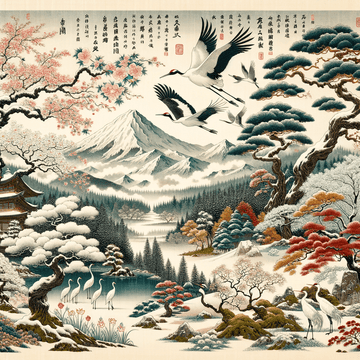"Understanding Australian Aboriginal Art: A Journey through Its Ancient Symbols and Storytelling"
Mar 05, 2024

Exploring the Richness and Complexity of Australian Aboriginal Art
The vibrant, intricate world of Australian Aboriginal Art has for long captivated audiences with its unique blend of historical richness, cultural significance, and striking aesthetics. As the oldest unbroken tradition of art in the world, Aboriginal Art offers a window into the ancient and diverse cultures of Australia's indigenous peoples, their deep spiritual beliefs, and their intimate connection with the land.
A Glimpse into a Timeless Tradition
Aboriginal Art dates back more than 60,000 years, with the earliest known examples being rock carvings and drawings. Over millennia, the art form has evolved to incorporate diverse mediums such as body painting, sand drawing, sculpture, and, more recently, acrylic painting on canvas. Despite these variations, Aboriginal Art remains deeply rooted in the themes of storytelling, spirituality, and the representation of the natural world.
The Language of Symbols
A remarkable feature of Aboriginal Art is its use of symbols. These symbols, drawn from the vast lexicon of Aboriginal iconography, function as a visual language, communicating narratives of the Dreamtime, ancestral beings' epic journeys, and the intricate relationships between humans, animals, and the land. Through these symbols, each artwork becomes a map, a story, a prayer, a lesson – a testament to the rich cultural heritage of the Aboriginal people.
Dreamtime Stories and the Art of Storytelling
Dreamtime or Jukurrpa is a fundamental concept in Aboriginal culture. It refers to the time of creation when ancestral beings shaped the world. Aboriginal Art often depicts these Dreamtime stories, presenting them in a visual format that transcends language barriers and brings to life the ancient wisdom of the Aboriginal peoples.
The Significance of Dot Painting
Dot painting, a style that emerged in the 1970s, is perhaps the most recognized form of Aboriginal Art. This style, characterized by meticulous patterns of dots, was developed as a way for artists to continue their traditions while protecting sacred knowledge. The dots can conceal specific meanings or details in the artworks, making them accessible to outsiders without revealing sacred information.
Contemporary Aboriginal Art
Contemporary Aboriginal Art is a dynamic, evolving field that continues to garner international acclaim. Today, Aboriginal artists blend traditional techniques with modern mediums and themes, creating artworks that are both visually stunning and culturally significant. These artworks continue to explore issues of identity, colonisation, and cultural survival, providing poignant commentary on the experiences of Aboriginal peoples in the modern world.
Conclusion
The richness and complexity of Aboriginal Art lie not only in its beauty but also in its capacity to communicate, educate, and provoke thought. It is a testament to the resilience, creativity, and profound spirituality of Australia's indigenous peoples. In exploring Aboriginal Art, we are invited to engage with an ancient culture, to appreciate its wisdom, and to reflect on our relationship with the world around us.
Interested in exploring more art like what we've discussed today? Our collection offers a diverse range of styles, including Aboriginal Art (Australian) and beyond. Feel free to dive into our world of artistic wonders by visiting https://metalposterart.com/collections/aboriginal-art-australian. Whether you're looking to admire or to acquire, there's always something captivating waiting for you. We're excited to share our passion for art with you.















